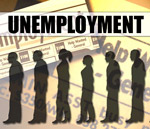It doesn’t matter how much the official statistics is accused in drawing fake numbers, sometimes they publish information which really speaks about the existing situation in the country.
Of course it is not done openly and the reality should be found in between the lines. It is done in a context, where they, in order to praise the A, they say that the B is in a bad situation, and the A is in a better situation that the B. Such information as published by the state statistics service two days ago. The national statistics service, in technical and financial support of the Asian development Bank, conducted a research entitled “non-formal sector and non-formal employment in Armenia” covering the ten marzes of Armenia and Yerevan. This report was posted in the official web site of the NSS on November 16.
This report concerns the non-formal employment (the black labor market). According to the authors of the report, the non-formal education has a low organization level and depends on seasons, changes often and the non-formal employers usually refuse to give information. For this reason it is hard to show the real level of employment. But these experts came to the conclusion that the half of employment in our country is non-formal. “The number of vacancies or the employment was estimated to be 1.19 million, which were usually created in the organizations of formal employment (52.4%), non-formal employment (37.9%), and households,” say the statisticians.
According to the report only the 52.1% of the employment capacity was non-formal, which is 621.7 thousand non-formal employees. It means that the majority of the economically active population is not registered as official employees. However, the statisticians are trying to ease the situation and say that 98.6% of he mentioned non-formal employment is in the sector of agriculture. What they say is that this number also includes the villagers and people who cultivate and sell agricultural products as well. Of course we cannot say that these people are violating the law, but the statisticians have found a better term for them. They say that this is “mostly conditioned by the lack of the legal organization status of the sector of agriculture”.
In the sector of agriculture the number of vacancies is 704.4 thousand, and the non-formal employment is estimated to be 20%. The level of non-formal employment is especially high in the sectors of construction (34.2%), trade (26.9%) and production (11.8%).
Let’s take this information and look at the issue from another side, from the side of unemployment. According to the official statistics, in 2009 the unemployment rate was 6.9%. Let’s find out how this rate was calculated. The number of people who are officially registered in the unemployment registration department is 81.400 (in 2009). It is also a fact that the number of economically active population is 1 million 185 thousand. The official statistics only calculated this 81.400 how much in the percentage from the number of the entire population, thus this is where they got this 6.9% from, which is written in their reports as an unemployment rate. Those who are not registered in the unemployment registration department are automatically considered as employed. However, everyone knows that the real rate of unemployment is much higher and according to different information it reaches 20-35%.
If we use the same report to calculate the unemployment rate, we will see a very funny thing. According to the report, the non-formal unemployment is 621.700, and in 2009 about 1.15 million people were employed. This means that the number of formal employment is 528.300. If the official statistics claims that if people are not registered as unemployed people they are employed, we may claim that those who are occupied but are not registered as employed are unemployed. Thus, we may claim that officially only 528.300 people are employed, and the others are unemployed. In this case it turns out that the unemployment rate exceeds 50%.
It is not true to say that the unemployment rate is 50%, it is not right either to say that it is 7%. Definitely the reality is in between of these two rates. It is hard to say where exactly though. One thing is for sure that we should not make any calculations and assumptions based on the official statistics.
The authors of the report also tried to evaluate the capacity of the shadow economy and came to the conclusion that the share of the non-formal sector was 11.2% in the GDP in 2009. The sectors that dominate in the non-formal economy are agriculture (36.2%), construction (26.6%) and trade (18.6%). The first one to share these rates is Yerevan with 38.8%, which is followed by the other major cities such as Ararat (12.1%), Shirak (9.1%), Armavir (9.1%) and Syunik (8.8%).

